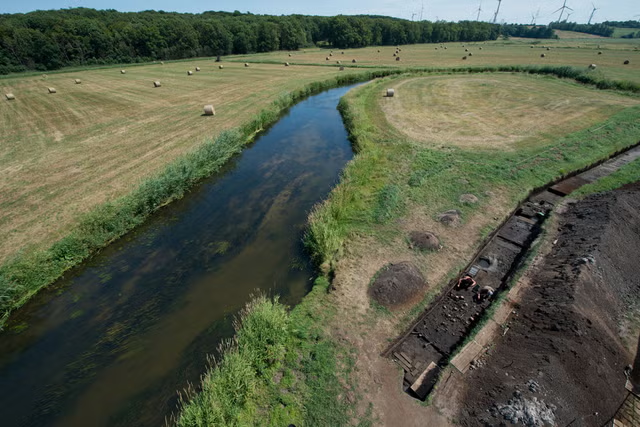A new species of flatworm has been found invading the U.S., having already spread across Florida, Georgia and North Carolina.
The species, named Amaga pseudobama, was discovered in North Carolina in 2020, according to a new paper in the journal PeerJ.
The worm, which is native to South America and invasive to the U.S., was named because of its similarity to another invasive flatworm named Obama nungara. Initially, the specimens of the new species were thought to belong to Obama nungara, which is native to Brazil and Argentina, and has invaded much of Europe. However, upon analysis of its DNA, the researchers discovered that it was a completely different species, and not even from the same Obama genus.
"Specimens of land planarians were found in a plant nursery in North Carolina, USA in July 2020," the researchers wrote in the paper. "On the basis of examination of photographs of the live specimens only, the specimens were identified as Obama nungara. To our surprise, a molecular analysis showed that the species was very different. We then carried out a detailed morphological and histological analysis, reported here, which allows us to describe these specimens as a new species, Amaga pseudobama."
Also known as land planaria, terrestrial flatworms are flat, ribbon-like creatures that live in moist soils. Most of these flatworms are carnivorous and feed on small invertebrates, especially earthworms, snails and slugs. Some species of land planaria have become invasive in the U.S. and other regions, often as a result of human activity. This can disrupt local ecosystems, as the invasive species prey on native invertebrates like earthworms.
Amaga pseudobama is thought to be native to South America, but has never been recorded there by science.
"The species has been found in three locations in North Carolina and some infested plants were from Georgia," the researchers wrote. "We reinvestigated specimens collected in Florida in 2015 and found that they also belong to this species. Citizen science observations suggest its presence in other states. Therefore, it is likely that A. pseudobama has already invaded a part of south-east USA and that the invasion took place more than ten years ago."
This places A. pseudobama among the ranks of other invasive flatworm species in the U.S., including hammerhead flatworms and New Guinea flatworms.
Hammerhead flatworms are named for their distinctive, hammerhead-shaped heads. These flatworms feast on native earthworms, disrupting local soil ecosystems, as earthworms play a crucial role in soil health by aerating the soil and facilitating the decomposition of organic matter.
Controlling populations of hammerhead flatworms is challenging. Because they reproduce asexually and can regenerate from small pieces of their body, simply cutting them in half is ineffective and can lead to more worms.
The new species, while being nearly indistinguishable from Obama nungara, also resembles another species of flatworm named Geoplana arkalabamensis, meaning that the three are very hard to tell apart.
"Three species, Amaga pseudobama, Geoplana arkalabamensis and the dark morphs of Obama nungara, all three flat and dark species with bodies with similar general morphology, will be difficult to differentiate in citizen science photos," the researchers wrote. "This poses a challenge and jeopardises the quality of the information that will be available on the invasion of the USA by these three species. However, the molecular information we provide here will help to differentiate the species."
Do you have a tip on a science story that Newsweek should be covering? Do you have a question about flatworms? Let us know via science@newsweek.com.
References
Justine, J.-L., Gastineau, R., Gey, D., Robinson, D. G., Bertone, M. A. & Winsor, L. (2024) A new species of alien flatworm in the Southern United States. PeerJ, 12, e17904. http://doi.org/10.7717/peerj.17904
Disclaimer: The copyright of this article belongs to the original author. Reposting this article is solely for the purpose of information dissemination and does not constitute any investment advice. If there is any infringement, please contact us immediately. We will make corrections or deletions as necessary. Thank you.



